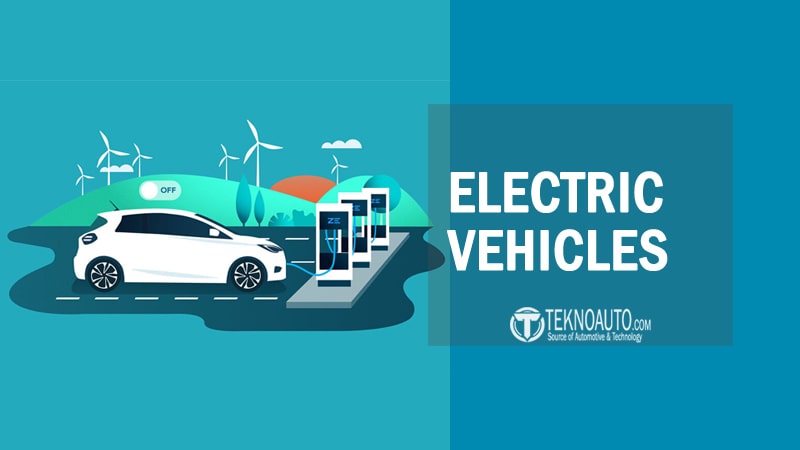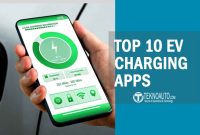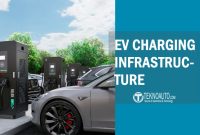Electric vehicles (EVs), didn’t arrive overnight. Their journey has been long, winding, and full of skepticism—from early concept cars to luxury-market experiments, and now, increasingly, a mainstream reality. Driven by elnvironmental urgency, policy changes, and rapid advancements in battery technology, EVs have moved beyond prototypes and niche adopters. They’ve become a serious part of the global conversation about the future of mobility.
But despite the growing presence of EVs on roads and in headlines, there’s still a great deal of confusion about what they really are. Are they all the same? How do they work? Are they as green as they claim to be? And where do hydrogen-powered cars fit into the mix?
What Are Electric Vehicles (EVs)?
An electric vehicle, at its core, is any vehicle that uses electricity as a primary source of propulsion. Unlike conventional cars that rely entirely on internal combustion engines burning gasoline or diesel, EVs are powered by electric motors that draw energy from onboard electrical systems. That electricity can come from a variety of sources—most commonly, rechargeable battery packs or hydrogen fuel cells.
But “electric vehicle” isn’t a single, unified category. It’s an umbrella term that covers multiple technologies with distinct characteristics and use cases. Battery-powered cars like the Tesla Model 3 and Nissan Leaf run purely on electricity and need to be charged regularly.
Hybrid models like the Toyota Prius combine an internal combustion engine with an electric motor, switching between them to maximize fuel efficiency. Then there are plug-in hybrids and hydrogen-powered fuel cell vehicles—each representing a different approach to reducing emissions and reshaping how we move.
What unites all of these is a shift away from fossil fuels toward cleaner, more efficient, and often more technologically advanced systems. EVs are not just a change in drivetrain—they represent a broader evolution in how vehicles interact with energy, the environment, and even the digital world around them.
Types of Electric Vehicles
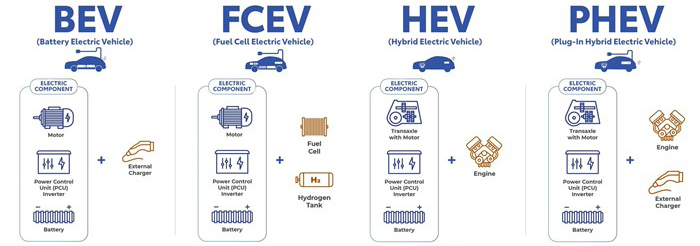
While the term “electric vehicle” might bring to mind a sleek sedan silently cruising through traffic, the truth is more nuanced. Not all Types of Electric Vehicles are built the same, and the way they use electricity can vary dramatically. To understand the electric vehicle ecosystem, it’s important to differentiate between the major categories that fall under this umbrella.
Each type represents a different philosophy of design and use—from the fully electric to the partially electrified, and even the hydrogen-powered. The distinctions aren’t just technical—they affect how the vehicle is used, how it’s maintained, how far it can travel, and where it makes the most sense to drive.
Battery Electric Vehicles (BEVs)

Battery Electric Vehicles (BEVs) are what most people now associate with the EV revolution. These are purely electric cars—no gasoline tank, no exhaust pipe, and no engine noise. They run entirely on electricity stored in large battery packs and use electric motors for propulsion.
When you plug in a BEV, you’re essentially fueling the vehicle with electricity. That energy is stored in a lithium-ion battery, which then powers one or more electric motors that drive the wheels. There’s no backup gasoline engine, so range and charging access become critical factors.
The rise of BEVs has been largely driven by advancements in battery technology, allowing for longer ranges and shorter charging times. Early models struggled to go beyond 100 miles on a single charge, but modern BEVs regularly exceed 250 miles, with some premium models topping 400 miles.
Examples of BEVs:
- Tesla Model 3 / Model Y
- Nissan Leaf
- Chevrolet Bolt EV
- Hyundai Ioniq 6
- BYD Han
Advantages:
- Zero tailpipe emissions
- Quiet and smooth driving experience
- Lower maintenance costs
- Instant torque and responsive acceleration
Challenges:
- Limited charging infrastructure in some regions
- Charging time can be long without fast charging
- Range anxiety for some users
Hybrid Electric Vehicles (HEVs)

Hybrid Electric Vehicles (HEVs) are not plug-in vehicles. Instead, they use a small battery and electric motor to support the internal combustion engine, primarily to improve fuel efficiency. The system automatically switches between or combines the gasoline engine and electric motor depending on driving conditions.
Regenerative braking plays a key role in HEVs, capturing energy during deceleration and storing it in the battery for later use. This design allows for better fuel economy, especially in city driving where frequent starts and stops allow more energy recovery.
HEVs are often indistinguishable from conventional cars in terms of use. You don’t plug them in; you refuel at a gas station just like a traditional vehicle.
Examples of HEVs:
- Toyota Prius (standard version)
- Honda Accord Hybrid
- Ford Escape Hybrid
- Hyundai Elantra Hybrid
Advantages:
- Better fuel economy than gasoline-only vehicles
- No need to plug in or change driving habits
- Often priced lower than plug-in models
Challenges:
- Still rely on gasoline
- Limited ability to drive in electric-only mode
- Smaller battery limits EV benefits
Plug-in Hybrid Electric Vehicles (PHEVs)

Plug-in Hybrid Electric Vehicles (PHEVs) are a hybrid between hybrids and BEVs. Like HEVs, they have an internal combustion engine, but unlike HEVs, they also feature a larger rechargeable battery that can be plugged into an outlet or charging station.
PHEVs offer a short electric-only range, typically between 20 to 60 miles depending on the model. After the electric range is depleted, the gasoline engine takes over. This makes PHEVs ideal for drivers who make short daily trips but still need the flexibility for long-distance travel without worrying about charging.
Because they can operate as full EVs for shorter trips and switch to hybrid mode when needed, PHEVs are often seen as a transition point between gasoline and fully electric driving.
Examples of PHEVs:
- Toyota RAV4 Prime
- Mitsubishi Outlander PHEV
- Hyundai Tucson Plug-in Hybrid
- BMW 330e
- Kia Niro Plug-in Hybrid
Advantages:
- Electric-only driving for short trips
- No range anxiety
- Can be fueled with gas when needed
- Often eligible for EV tax credits
Challenges:
- Still emit emissions when in gas mode
- More complex EV Powertrain
- Require both charging and refueling
Fuel Cell Electric Vehicles (FCEVs)
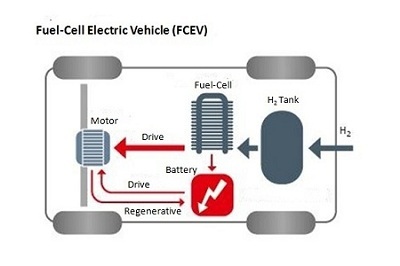
Fuel Cell Electric Vehicles (FCEVs) represent a completely different approach to electric propulsion. Instead of drawing electricity from a battery, FCEVs generate their own electricity on board using a hydrogen fuel cell. The vehicle stores compressed hydrogen in tanks, and when hydrogen reacts with oxygen in the fuel cell, it creates electricity, which then powers an electric motor.
The only byproduct of this chemical reaction is water vapor. That makes FCEVs just as clean at the tailpipe as BEVs, while also offering faster refueling—often comparable to gasoline refueling times.
FCEVs are especially promising for heavy-duty vehicles and long-distance driving, where battery weight and charging time become limiting factors. However, the technology is held back by the lack of hydrogen refueling infrastructure, which remains limited to a few regions.
Examples of FCEVs:
- Toyota Mirai
- Hyundai Nexo
- Honda Clarity Fuel Cell (discontinued)
- Hyundai XCIENT Fuel Cell (commercial truck)
- Nikola Tre FCEV (truck)
Advantages:
- Zero tailpipe emissions
- Quick refueling time (3–5 minutes)
- Good for long-range driving and fleets
- Quiet and smooth electric driving
Challenges:
- Limited availability of hydrogen stations
- High vehicle and infrastructure cost
- Green hydrogen not yet widely used
Comparison Table: BEV vs HEV vs PHEV vs FCEV
| Feature | BEV | HEV | PHEV | FCEV |
|---|---|---|---|---|
| Primary Power Source | Battery only | Gasoline + Electric Assist | Battery + Gasoline | Hydrogen Fuel Cell |
| Charging Required | Yes | No | Yes | Hydrogen Refueling |
| Range (Average) | 200–400 miles | 500+ miles | 20–60 EV + Hybrid Mode | 300–400 miles |
| Emissions | Zero tailpipe emissions | Reduced emissions | Low (Electric first) | Zero tailpipe emissions |
| Refueling Time | 30 mins to 12 hrs | 3–5 mins | 1–2 hrs (charge) + gas | 3–5 mins |
| Infrastructure Required | Charging stations | Gas stations | Charging + Gas stations | Hydrogen stations |
| Best For | Zero-emission lifestyle | No home charging access | Short commutes + long trips | Long range + fast refuel |
How Electric Vehicles Work

Electric vehicles don’t just replace the fuel tank with a battery—they reimagine how a car functions from the ground up. The absence of a combustion engine changes the entire mechanical layout, simplifying some systems while introducing new technologies that manage energy flow, regulate temperature, and ensure efficient power delivery.
At the heart of every electric vehicle is a system that converts stored or generated electricity into motion. While the principles differ slightly between battery-powered and hydrogen-powered models, the core logic remains the same: electrical energy drives an electric motor, which turns the wheels.
The Electric Drivetrain
An electric drivetrain begins with the energy source—usually a lithium-ion battery pack stored beneath the floor of the vehicle. This battery supplies high-voltage electricity to an inverter, a device that transforms the battery’s direct current (DC) into alternating current (AC), which is what most electric motors use to operate.
The electric motor, often mounted near the axle, takes that current and creates rotational energy. Unlike traditional engines, which rely on a complex combination of pistons, valves, and gears, electric motors provide torque almost instantly. This is why EVs feel so responsive when accelerating—they don’t need to “build up” power.
The simplicity of this drivetrain has several benefits. With fewer moving parts, there’s less friction, less heat, and significantly lower maintenance. No oil changes, no timing belts, and no exhaust systems.
Battery Technology and Power Delivery
The battery in an EV functions like a fuel tank but with greater complexity. It must store a significant amount of energy safely, withstand thousands of charge-discharge cycles, and operate effectively across a wide range of temperatures. Modern EVs use lithium-ion battery chemistry because of its high energy density and long cycle life.
Battery packs are composed of hundreds or even thousands of individual cells, grouped into modules and managed by a Battery Management System (BMS). This system ensures each cell charges and discharges evenly, prevents overheating, and communicates with the car’s main computer to manage power use and regeneration.
When you press the accelerator, the car’s controller signals the inverter to send power to the motor. When you release the pedal or apply the brakes, the system shifts into regeneration mode—capturing kinetic energy and sending it back to the battery.
Regenerative Braking
This is one of the defining technologies in electric vehicles. Instead of using friction-based brakes exclusively to slow the car down, EVs use the electric motor in reverse. The spinning wheels turn the motor, which then acts as a generator. That energy is converted back into electricity and fed into the battery.
The effect is twofold. It recovers energy that would otherwise be wasted, and it reduces wear on the traditional braking system. Some EVs even allow drivers to control how aggressive the regenerative braking feels, offering “one-pedal driving” in certain settings.
Power Electronics and Control Systems
Beyond the motor and battery, EVs rely heavily on electronic control units. These systems manage everything from throttle response to battery temperature to energy efficiency. A thermal management system keeps the battery within a safe temperature range using liquid cooling or air systems.
The vehicle’s controller also coordinates with charging hardware. When plugged in, it communicates with the charger to regulate voltage and current, optimizing the charging speed and protecting the battery from overcharging.
In hydrogen fuel cell vehicles, the mechanism is slightly different. Instead of drawing power from a pre-charged battery, the vehicle generates electricity in real time by feeding hydrogen into a fuel cell stack, where it reacts with oxygen to create electricity. That electricity powers the motor in much the same way as a battery does, but the energy is created on-demand rather than stored.
Charging and Energy Flow
For battery electric vehicles, charging is the equivalent of refueling. This can be done at home, at a workplace, or at a public charging station. There are three general levels of charging:
- Level 1 EV Charging (120V): The slowest method, using a standard household outlet. Adds about 3–5 miles of range per hour.
- Level 2 EV Charging (240V): The most common residential and public option, adding 20–30 miles per hour.
- DC Fast Charging: Available at public stations, capable of delivering up to 80% charge in 20–40 minutes, depending on battery size and vehicle capabilities.
The energy flow in EVs is managed dynamically. When idling, energy usage is minimized. During acceleration, the inverter sends maximum current to the motor. When decelerating, the energy flow reverses, capturing braking energy to replenish the battery.
Energy Efficiency and Performance
One of the standout qualities of electric vehicles is their energy efficiency. Internal combustion engines typically convert only about 20% of the energy in gasoline into movement; the rest is lost as heat. EVs, by contrast, can convert 60–80% of their stored energy into motion.
This efficiency translates into real-world benefits: lower fuel costs, smoother operation, and reduced environmental impact. It also contributes to the characteristic “instant torque” sensation many drivers appreciate—power is delivered immediately without needing to rev up an engine.
Key Components of an Electric Vehicle
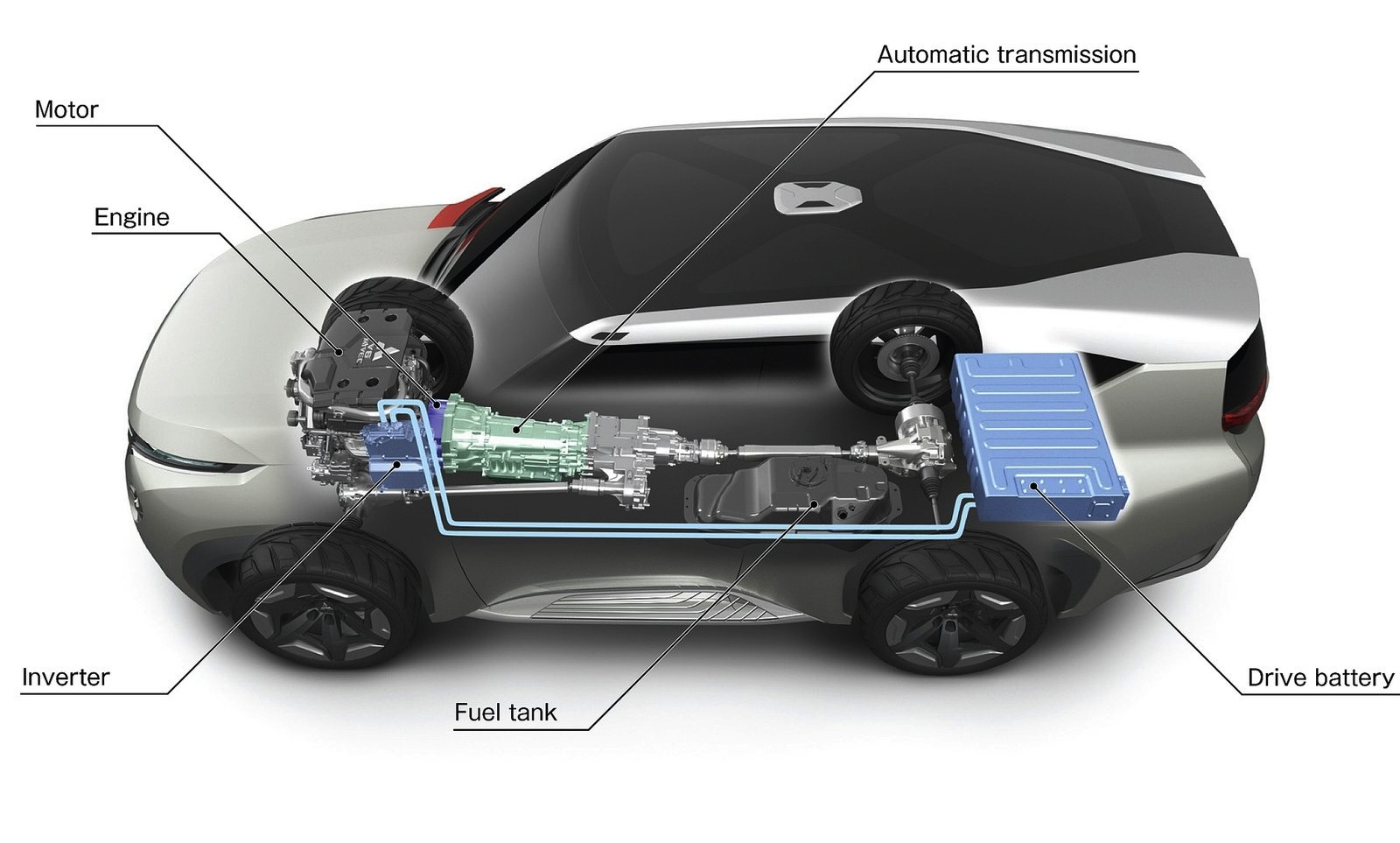
Electric vehicles may seem simpler on the surface, but behind the scenes, they rely on an intricate set of components designed to manage, deliver, and conserve energy. These systems work in harmony to provide power to the wheels, ensure safety, and maximize efficiency across various driving conditions.
Electric Motor
The electric motor is at the heart of every EV. It replaces the traditional combustion engine and serves as the primary source of propulsion. Rather than burning fuel, it uses electromagnetic fields to produce rotational force, instantly generating torque that propels the vehicle forward.
One of the reasons EVs feel so responsive is this motor’s ability to deliver power without delay. There’s no lag, no revving—just immediate acceleration. Most EVs today use either induction motors or permanent magnet motors, both of which are highly efficient and nearly silent during operation.
Battery Pack
Instead of a fuel tank, EVs are equipped with a high-voltage battery pack, usually lithium-ion based. These batteries store the energy required to power the motor and auxiliary systems like climate control, lighting, and infotainment.
Modern EV batteries are composed of thousands of individual cells organized into modules. These packs are often placed beneath the vehicle floor, lowering the center of gravity and improving handling. The size of the battery determines the vehicle’s range and performance, making it one of the most critical and costly components in the entire system.
Battery Management System (BMS)
A battery is only as reliable as the system that controls it. The Battery Management System is responsible for monitoring each cell’s voltage, temperature, and state of charge. It ensures the battery operates within safe and optimal parameters, balancing the charge between cells and preventing thermal runaway or overcharging.
Without a robust BMS, the battery’s efficiency and lifespan would degrade rapidly. It acts as the silent guardian, constantly optimizing how energy is stored and used throughout every journey.
Inverter
The inverter plays a key role in power delivery. Electric motors typically run on alternating current (AC), but the battery stores electricity as direct current (DC). The inverter’s job is to convert DC into AC for the motor, and vice versa during regenerative braking.
This component also adjusts the frequency and amplitude of the electrical signal sent to the motor, allowing precise control over speed and torque. In short, it determines how the car responds when you press the accelerator.
Onboard Charger
When you plug an EV into a power source, the onboard charger manages the flow of electricity into the battery. It converts alternating current from the grid into the direct current that the battery can accept. More advanced chargers are capable of adapting to different power levels and charging rates depending on the source and vehicle capacity.
The onboard charger also facilitates communication between the car and the charging station, ensuring that the charging process is safe, efficient, and compliant with standards.
Thermal Management System
Batteries and electronic systems are sensitive to temperature. Extreme heat or cold can degrade performance and reduce lifespan. To address this, EVs use a thermal management system to keep critical components within a narrow operating range.
Most modern EVs use liquid cooling systems, circulating coolant through the battery and motor assembly to maintain temperature. In colder climates, these systems may preheat the battery to ensure efficient charging and optimal driving range.
Regenerative Braking System
One of the most innovative features of electric vehicles is regenerative braking. Instead of relying solely on mechanical brakes to slow the car, the EV’s motor reverses its function during deceleration. It acts as a generator, converting kinetic energy back into electricity and sending it to the battery.
This not only helps recharge the battery while driving but also reduces wear on the brake pads, contributing to lower maintenance over time. Many drivers find that regenerative braking allows for smoother, more controlled stops, especially in stop-and-go traffic.
Control Unit and Power Electronics
All of these systems must be managed with precision. The control unit—sometimes referred to as the vehicle’s “brain”—coordinates the flow of energy between the battery, inverter, motor, and auxiliary systems. It also handles data from sensors, user inputs, and the vehicle’s status to optimize performance and efficiency in real time.
Power electronics housed throughout the vehicle ensure that voltage levels are appropriately stepped up or down, depending on where the energy is needed. These components are responsible for everything from heating the cabin to keeping the traction system responsive on slippery roads.
Benefits of Driving an Electric Vehicle

The shift toward electric mobility isn’t just about cleaner energy or sleek design. For many people, driving an EV introduces an entirely new set of advantages that go beyond simply replacing a gas tank with a plug. These benefits touch on cost, performance, environmental impact, and the overall driving experience.
Environmental Advantages
Perhaps the most widely recognized benefit of EVs is their contribution to reducing emissions. Battery electric vehicles produce zero tailpipe emissions—no carbon monoxide, nitrogen oxides, or particulates are released during operation. In cities grappling with air pollution, this has immediate public health implications.
Even when accounting for the electricity used to charge an EV, the overall carbon footprint tends to be significantly lower than that of an internal combustion engine (ICE) vehicle. As power grids continue to incorporate more renewable energy sources, the emissions associated with EV charging decrease even further, strengthening their environmental case over time.
Lower Fuel and Operating Costs
One of the most appealing aspects of EV ownership is the savings on fuel. Electricity is generally more affordable than gasoline or diesel, especially when charging overnight at home using off-peak rates. Over months and years, this cost difference can be substantial, especially for high-mileage drivers.
Maintenance is another area where EVs shine. With no engine oil to change, no exhaust system to maintain, and fewer moving parts overall, routine maintenance tends to be simpler and less expensive. Components like brake pads also last longer, thanks to regenerative braking systems that reduce wear during deceleration.
Performance and Driving Experience
Driving an EV often surprises people—especially those accustomed to traditional cars. Electric motors provide instant torque, delivering power the moment the accelerator is pressed. This makes for a smooth, quick launch from a standstill, and seamless acceleration even at highway speeds.
The absence of engine vibration and transmission shifts also contributes to a refined and quiet driving experience. Whether in city traffic or cruising along an open road, EVs feel calm and controlled, with linear power delivery that’s easy to modulate.
Handling is often improved thanks to the low placement of the battery pack, which lowers the car’s center of gravity. This results in more stable cornering and better weight distribution—something that performance EVs actively leverage.
Home Charging Convenience
One underrated benefit of owning an EV is the convenience of charging at home. Instead of visiting a gas station weekly, drivers can simply plug in their vehicle in the evening and wake up to a fully charged battery.
This daily routine suits urban and suburban lifestyles particularly well. It reduces downtime and eliminates the need for special trips just to refuel. For those with access to solar power, the experience becomes even more sustainable and cost-effective.
Incentives and Tax Benefits
To encourage adoption, many governments offer financial incentives for EV buyers. These can include tax credits, rebates, reduced vehicle registration fees, or exemptions from congestion charges and toll roads. Some regions also provide incentives for home charging equipment installation.
While these incentives vary by location and may phase out over time, they often help bridge the gap in upfront cost between EVs and conventional vehicles, making the transition more accessible.
Reduced Noise Pollution
EVs operate quietly—both inside and out. The electric motor produces minimal noise, which not only creates a more serene cabin experience but also contributes to reduced noise pollution in urban areas. Some cities are beginning to recognize the value of quieter streets, especially in densely populated neighborhoods.
To address safety concerns for pedestrians, especially those with visual impairments, many EVs now come with external pedestrian warning sounds at low speeds. Even with these systems in place, the overall noise footprint remains significantly lower than that of a combustion engine.
Technological Integration
Most EVs are built from the ground up with digital technology in mind. They often come equipped with advanced infotainment systems, smartphone integration, and over-the-air software updates. In some cases, features can be added or improved remotely, much like updating an app on a phone.
Driver-assist features such as adaptive cruise control, lane-keeping systems, and automatic emergency braking are often standard on EVs. Some manufacturers are also exploring vehicle-to-grid (V2G) capabilities, where an EV can supply energy back to a home or the electrical grid during peak demand
Challenges and Limitations
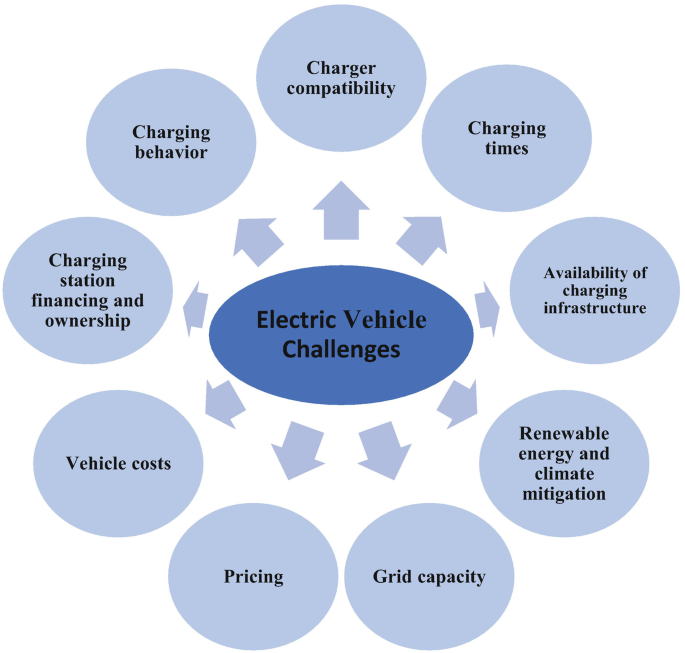
While electric vehicles offer numerous advantages, they are not without their complications. The transition from internal combustion to electric power introduces new dependencies, logistical concerns, and technological hurdles that affect adoption in different ways across regions, income levels, and driving needs.
Charging Infrastructure Gaps
One of the most persistent concerns for EV owners—and especially potential buyers—is access to reliable charging. While home charging covers most day-to-day use, not everyone has a driveway or garage. For those living in apartments or urban housing without private parking, depending entirely on public chargers can be inconvenient.
Even in cities where charging stations are plentiful, availability can be inconsistent. Fast chargers are often occupied or out of service. In rural or developing areas, the infrastructure may be nearly nonexistent, limiting the practicality of EVs for long-distance travel or regular use outside urban centers.
The good news is that infrastructure is expanding quickly in many countries, thanks to both government initiatives and private investment. But for now, the experience of owning an EV varies significantly based on location.
Charging Time vs. Refueling Time
Charging an EV, even under ideal conditions, takes longer than filling up a gas tank. Level 2 home chargers typically add around 20–30 miles of range per hour, which means a full charge could take 8 hours or more. While this is manageable for overnight home charging, it’s less convenient on the road.
DC fast charging is improving this experience, offering up to 80% battery in under an hour for many models. Still, not all EVs can handle ultra-fast charging, and repeated use of fast chargers can impact battery longevity over time. For drivers used to quick fuel stops, the time tradeoff remains a noticeable adjustment.
Vehicle Cost and Affordability
Although the total cost of ownership often favors EVs in the long term, their upfront purchase price remains a barrier for many buyers. Battery technology is still expensive, and EV models often carry a premium over comparable gasoline cars.
Government incentives can help offset this cost, but they are not always permanent or universally available. Until battery production scales more dramatically or alternative chemistries become viable, price will continue to be a factor that slows adoption—particularly in emerging markets.
Range Anxiety
Even as battery ranges improve—many models now exceed 250 to 300 miles on a single charge—EV range anxiety still plays a psychological role. For drivers accustomed to stopping at any corner gas station, planning routes around charging stations can feel restrictive.
This fear is amplified in extreme weather, where cold or heat can reduce battery performance. Drivers in northern climates often notice a drop in winter range, while high temperatures can also impact efficiency and increase energy usage for climate control.
Battery Degradation and Longevity
Like any rechargeable device, an EV’s battery slowly degrades over time. Although most modern EVs retain over 70% of their capacity after 8 to 10 years, degradation can still affect resale value and long-term range expectations.
Manufacturers are working to improve chemistry, thermal management, and software algorithms to extend battery life. Warranties often cover battery packs for 8 years or more, offering peace of mind—but buyers of used EVs may still be cautious.
Limited Model Availability in Some Markets
While the global EV market is expanding quickly, availability isn’t uniform. Some regions have access to a wide range of models—from compact city cars to luxury SUVs—while others may be limited to just a handful.
This lack of diversity can make it difficult for buyers to find an EV that meets specific needs, such as towing capacity, cargo space, or off-road capability. Commercial fleets, pickup truck buyers, and niche segments are still underserved in many parts of the world, though that is beginning to change with upcoming models.
Hydrogen Infrastructure and FCEV Limitations
For fuel cell electric vehicles (FCEVs), infrastructure is an even bigger challenge. Hydrogen refueling stations are limited to a few regions globally, primarily in parts of California, Japan, and South Korea. Without widespread refueling options, FCEVs are not viable for most consumers.
Additionally, while FCEVs offer fast refueling and long range, producing and distributing hydrogen—especially “green hydrogen” from renewable sources—remains energy-intensive and expensive. Until that ecosystem matures, FCEVs will likely remain a niche solution, better suited for commercial or fleet applications than personal use.
The Future of Electric Mobility

Electric vehicles have already reshaped the way we think about transportation, but the journey is far from over. As the technology matures, we are not just moving away from fossil fuels—we’re moving toward a more intelligent, integrated, and sustainable ecosystem of mobility. The future of electric vehicles will not be defined solely by the cars themselves, but by how they connect to infrastructure, energy systems, and even our homes.
Advancements in Battery Technology
Much of the EV revolution depends on battery innovation. The lithium-ion batteries that power most electric cars today are effective, but far from perfect. Researchers and manufacturers are exploring new chemistries that promise higher energy density, faster charging times, longer lifespans, and improved safety.
Solid-state batteries are among the most anticipated breakthroughs. By replacing the liquid electrolyte with a solid material, these batteries could offer increased range, reduced fire risk, and greater durability. Although still in the development phase, several automakers are targeting commercial solid-state EVs in the next five to ten years.
Other advancements include lithium iron phosphate (LFP) batteries, which offer lower costs and longer life cycles—ideal for entry-level and fleet EVs. Meanwhile, recycling and second-life applications are emerging to address the environmental concerns associated with battery production and disposal.
Expanding Charging Networks
A widespread, reliable charging infrastructure is crucial for large-scale EV adoption. Governments, utility companies, and private firms are racing to build out networks that support everything from fast public chargers on highways to smart residential systems that optimize energy use.
Future charging stations won’t just be plugs on the side of the road—they’ll be smarter, faster, and more integrated. Wireless inductive charging is being tested in some cities, allowing cars to charge simply by parking over embedded pads. Vehicle-to-grid (V2G) technology is also advancing, enabling EVs to return unused electricity to the grid during peak demand periods.
With urban planners now considering EV infrastructure in zoning and development, charging will become more embedded in daily life—not a detour, but part of the routine.
Integration with Renewable Energy
One of the most powerful aspects of EVs is how they align with renewable energy sources. Unlike gasoline cars, which rely on finite fossil fuels, EVs can be powered by solar, wind, and hydroelectric energy—either from the grid or generated locally.
Some homeowners are already pairing rooftop solar panels with EV chargers, creating near-zero-emission driving. As energy storage improves, vehicles may also become mobile batteries—able to store and redistribute clean energy across neighborhoods or buildings.
This kind of integration is central to future smart grids, where electricity flows dynamically between sources, users, and storage. In that context, EVs are not just vehicles, but energy assets.
Broader Adoption and Vehicle Variety
The EV market is rapidly diversifying. What started with compact sedans and premium electric models has now expanded to include SUVs, trucks, motorcycles, delivery vans, and even buses. Over the next decade, nearly every vehicle segment will have viable electric options, from affordable city cars to luxury performance vehicles.
Emerging markets are also becoming a key focus. With falling battery prices and global regulatory shifts, countries in Southeast Asia, Africa, and South America are beginning to invest in electric mobility. Two- and three-wheeled EVs are already gaining traction in many of these regions, offering clean transportation at scale.
Fleet electrification is another major trend. Companies are converting delivery vans, taxis, and trucks to electric power—not just for sustainability, but also for lower total ownership costs and compliance with emissions regulations.
Policy, Regulation, and Market Shifts
Governments around the world are accelerating the shift with increasingly bold targets. Some have announced bans on the sale of new internal combustion vehicles by 2030 or 2035. Others are investing heavily in charging networks, EV manufacturing, and battery production as part of broader climate goals.
Carbon pricing, emissions regulations, and clean energy mandates are all aligning to push the market further toward electrification. In response, automakers are committing billions to develop electric platforms, retool factories, and secure mineral supply chains.
These shifts are not just regulatory—they’re structural. The transition to EVs will impact employment, supply chains, city design, and the energy market. It is already prompting strategic alliances between carmakers, battery firms, and tech companies.
Mobility Beyond the Private Car
Perhaps the most transformative aspect of the electric future lies beyond personal vehicles. Shared mobility, autonomous car driving, and multimodal transportation are all evolving alongside EV technology.
Electric buses are becoming more common in cities, reducing both emissions and noise. Micromobility options like electric bikes and scooters are filling the gap between walking and driving. Even aviation and maritime sectors are beginning to experiment with electric propulsion for short-haul trips and cargo transport.
As these systems connect, mobility becomes more flexible, affordable, and environmentally responsible. An electric future doesn’t just mean cleaner cars—it means reimagining how people and goods move through the world.
Final Thoughts
The electric vehicle is more than a response to rising fuel prices or environmental concerns—it’s the foundation of a broader shift in how we move, how we consume energy, and how we think about transportation itself. While the road to full electrification is still under construction, each milestone—new battery breakthroughs, expanded charging infrastructure, more diverse vehicle models—brings that future closer into view.
What began with a handful of niche models has grown into a worldwide transformation. Electric vehicles now serve families, businesses, and governments, not just as alternatives to gasoline cars but as smarter, quieter, and more sustainable choices. They’re reshaping cities, influencing energy policy, and challenging century-old automotive traditions.
That said, no technology is without its trade-offs. The EV revolution faces real hurdles, from infrastructure gaps and high upfront costs to regional limitations and concerns over battery sourcing. Still, the momentum is undeniable—and with it comes the opportunity to rethink transportation in ways that benefit both people and the planet.
As electric vehicles continue to evolve, one thing becomes clear: we’re not just witnessing the next generation of cars—we’re participating in the redesign of mobility itself.
Summary Table: Electric Vehicles at a Glance
| Aspect | Details |
|---|---|
| Main Types | BEV, HEV, PHEV, FCEV |
| Power Source | Battery (for BEVs, PHEVs), Internal Combustion + Battery (HEVs), Hydrogen Fuel Cell (FCEVs) |
| Tailpipe Emissions | Zero (BEV, FCEV), Low (HEV, PHEV) |
| Refueling Method | Electric Charging (BEV, PHEV), Gasoline + Electric (HEV, PHEV), Hydrogen Pump (FCEV) |
| Range (Typical) | 200–350 miles (BEV), 400–600 miles (HEV, PHEV), 300–400 miles (FCEV) |
| Charging Time | 30 min – 12 hrs (depending on level), instant fueling for HEV & FCEV |
| Main Benefits | Lower emissions, less maintenance, fuel savings, quiet operation, government incentives |
| Main Challenges | Charging infrastructure, range anxiety, higher upfront cost, limited availability in some regions |
| Future Trends | Solid-state batteries, V2G integration, autonomous EVs, renewable energy synergy |
Frequently Asked Questions about Electric Vehicles (EVs)
What is an electric vehicle (EV)?
An electric vehicle is a car powered partially or fully by electricity, using batteries and electric motors instead of gasoline engines.
What are the advantages of driving an EV?
EVs offer lower running costs, fewer emissions, smooth acceleration, reduced maintenance, and potential government incentives.
Can I charge an EV at home?
Yes. Most EV owners install a Level 2 charger at home, allowing overnight charging and full convenience.
What does the future of EVs look like?
The future includes solid-state batteries, faster charging, vehicle-to-grid integration, autonomous EVs, and widespread use in all vehicle segments.
Are EVs really better for the environment?
Yes. Even accounting for electricity generation, EVs produce significantly fewer emissions than traditional gas-powered vehicles.

